Abstract
A rapid infiltration land wastewater application site, composed of unconsolidated silty sand and gravel, which has been in continuous operation for over 30 years was examined for the accumulation and/or migration of a tracer virus (coliphage f2), indigenous enteroviruses, and enteric indicator bacteria in the soils and underlying groundwater. Tracer f2 penetrated into groundwater together with the front of percolating primary effluent and was not observed to concentrate on the upper soil layers. The tracer virus concentration in a 60-foot (about 18.3-m)-deep observation well directly beneath the wastewater application area began to increase within 48 h after application to the soil. The tracer level in this well stabilized after 72 h at a level of approximately 47% of the average applied concentration. Indigenous enteroviruses and tracer f2 were sporadically detected in the groundwater at horizontal distances of 600 feet (about 183 m) from the application zone. Laboratory soil adsorption studies confirmed the poor virus adsorption observed at the site. This was especially true on surface soils when contained in wastewater. Enteric indicator bacteria were readily concentrated on the soil surface by filtration on the soil surface mat. However, during tracer f2 virus tests, comparison studies with fecal Streptococcus revealed that bacteria capable of penetrating the surface were able to migrate into the groundwater. They were detected at the same locations as tracer and enteric viruses.
Full text
PDF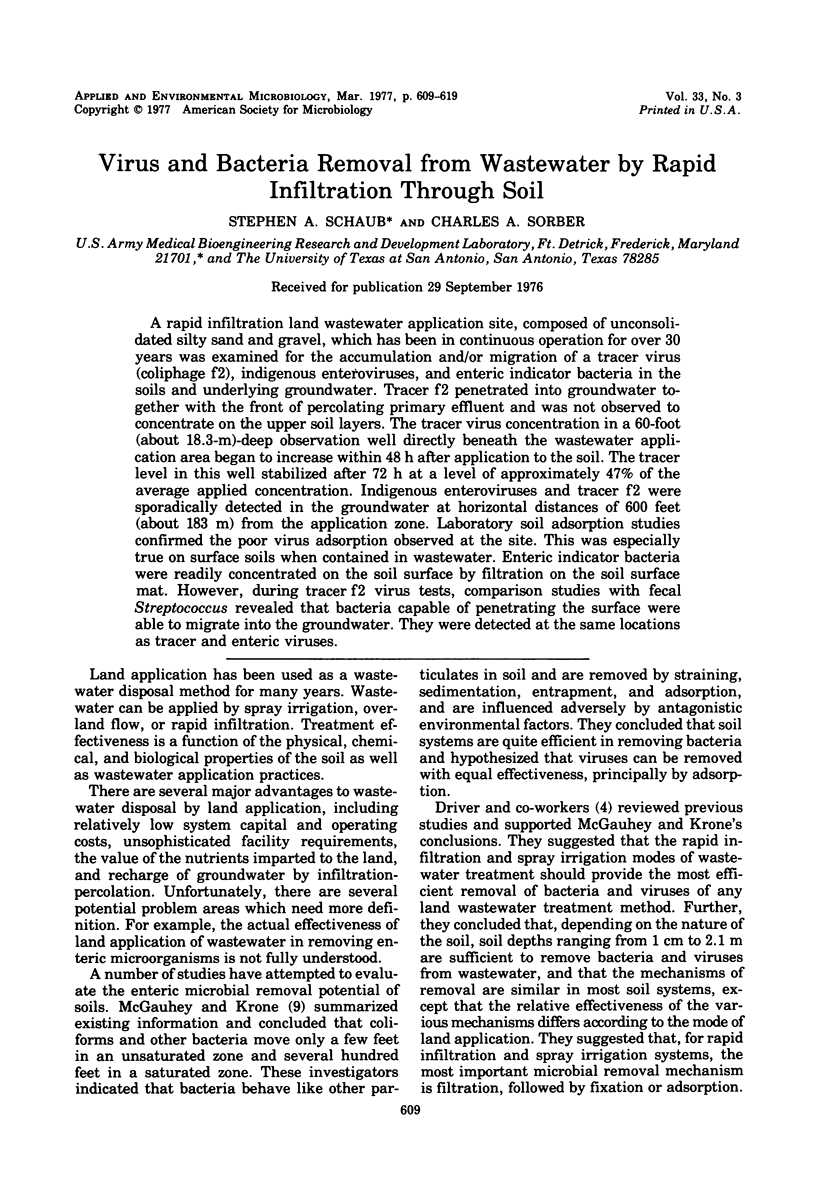
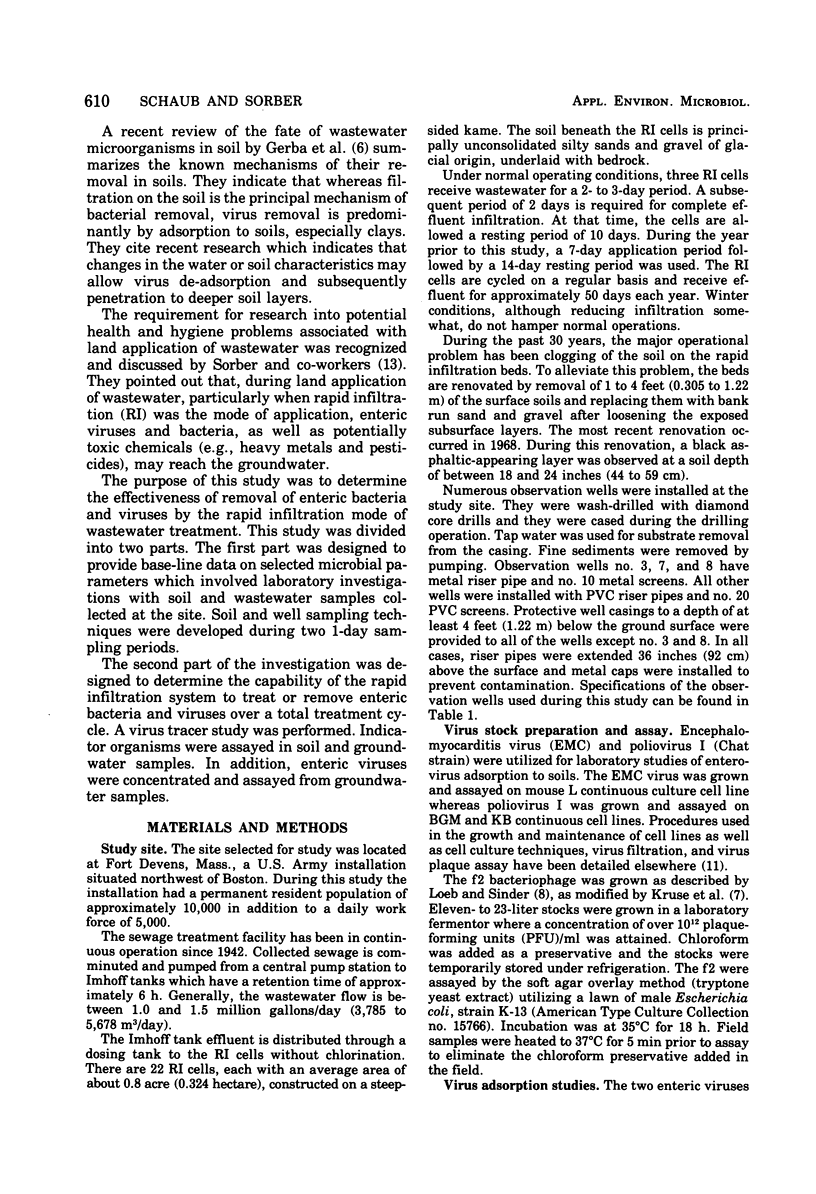
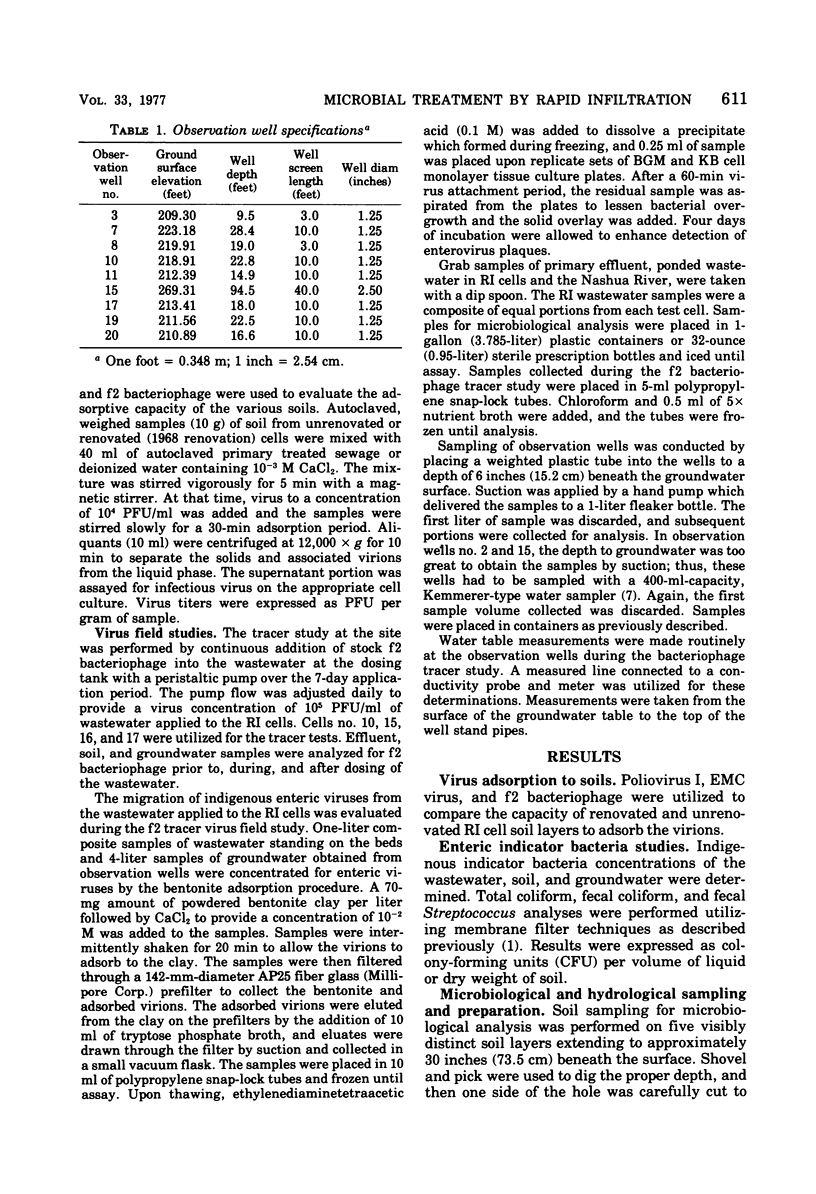
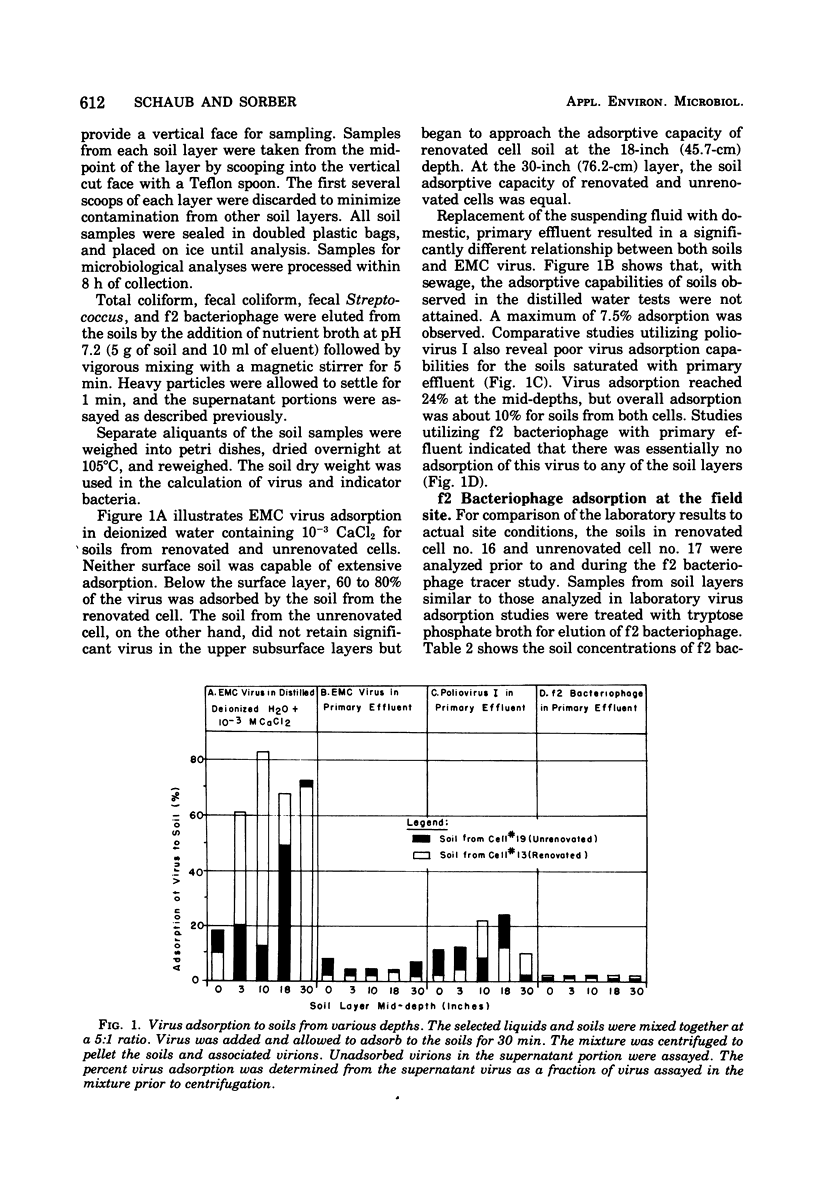
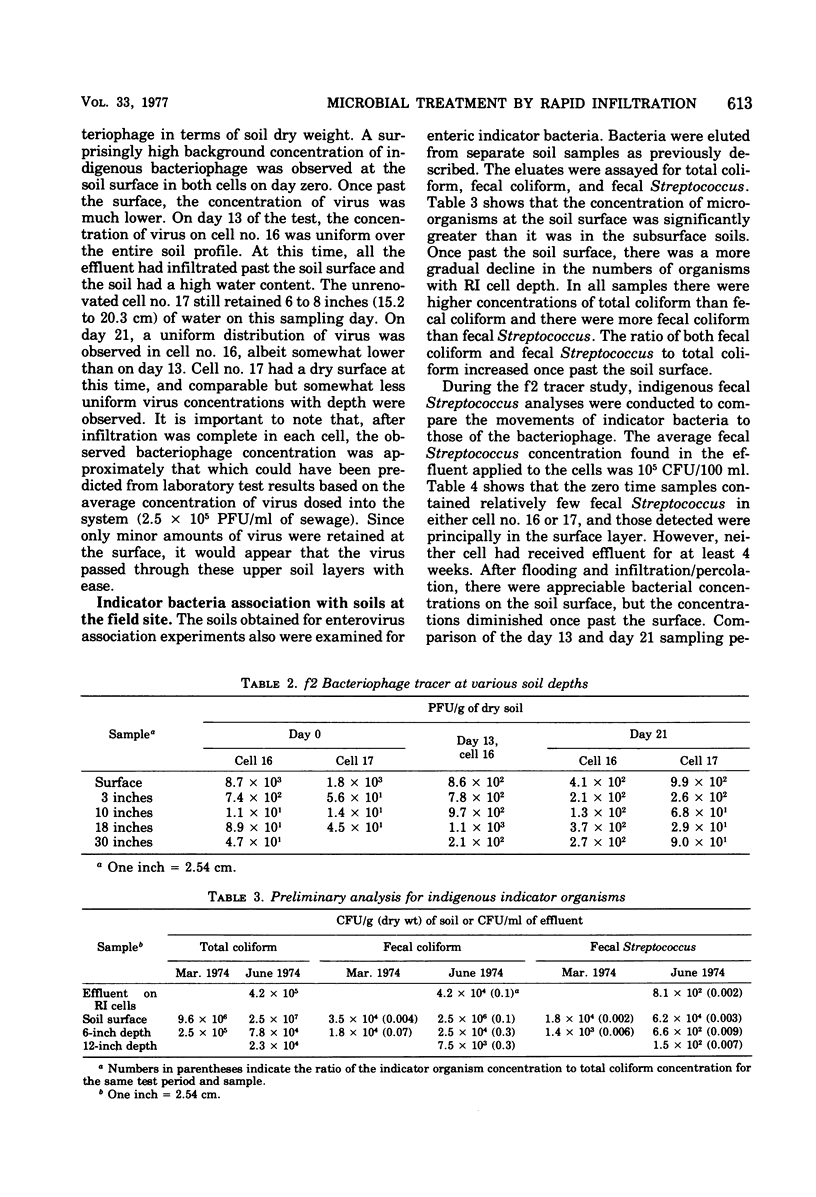
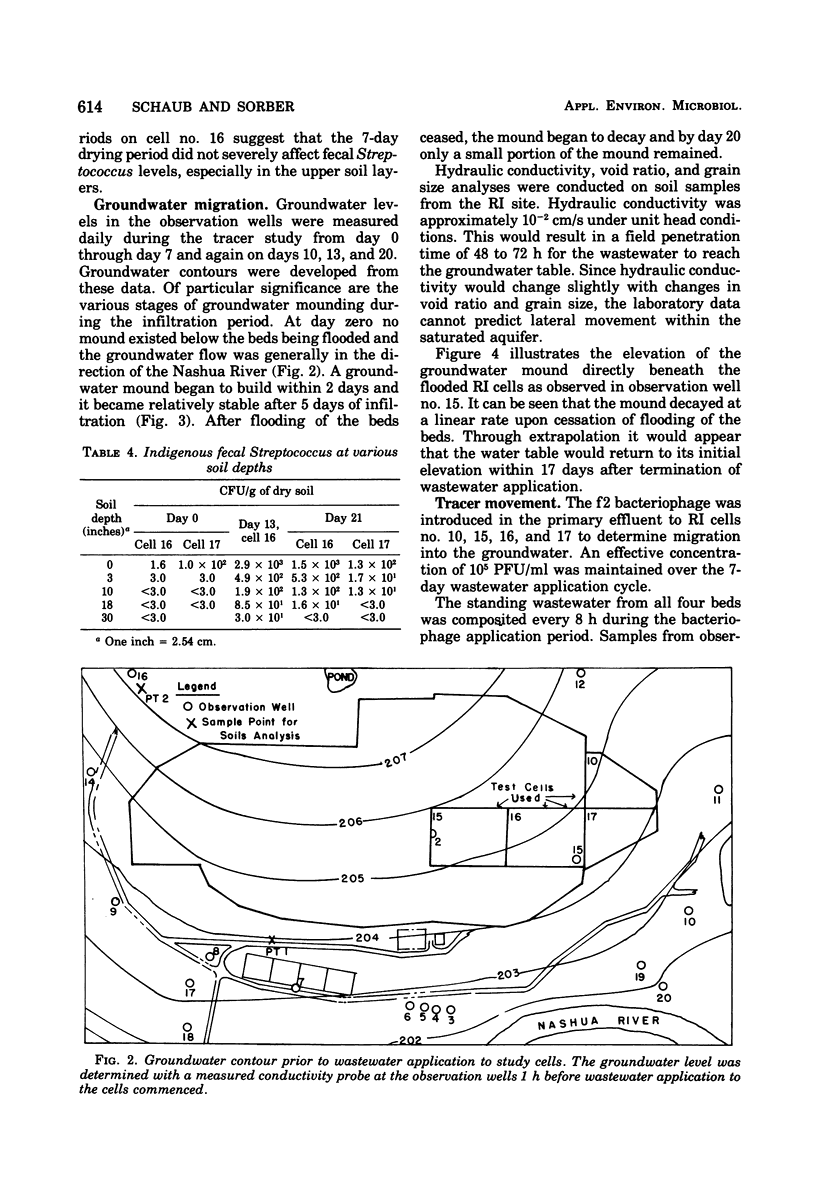
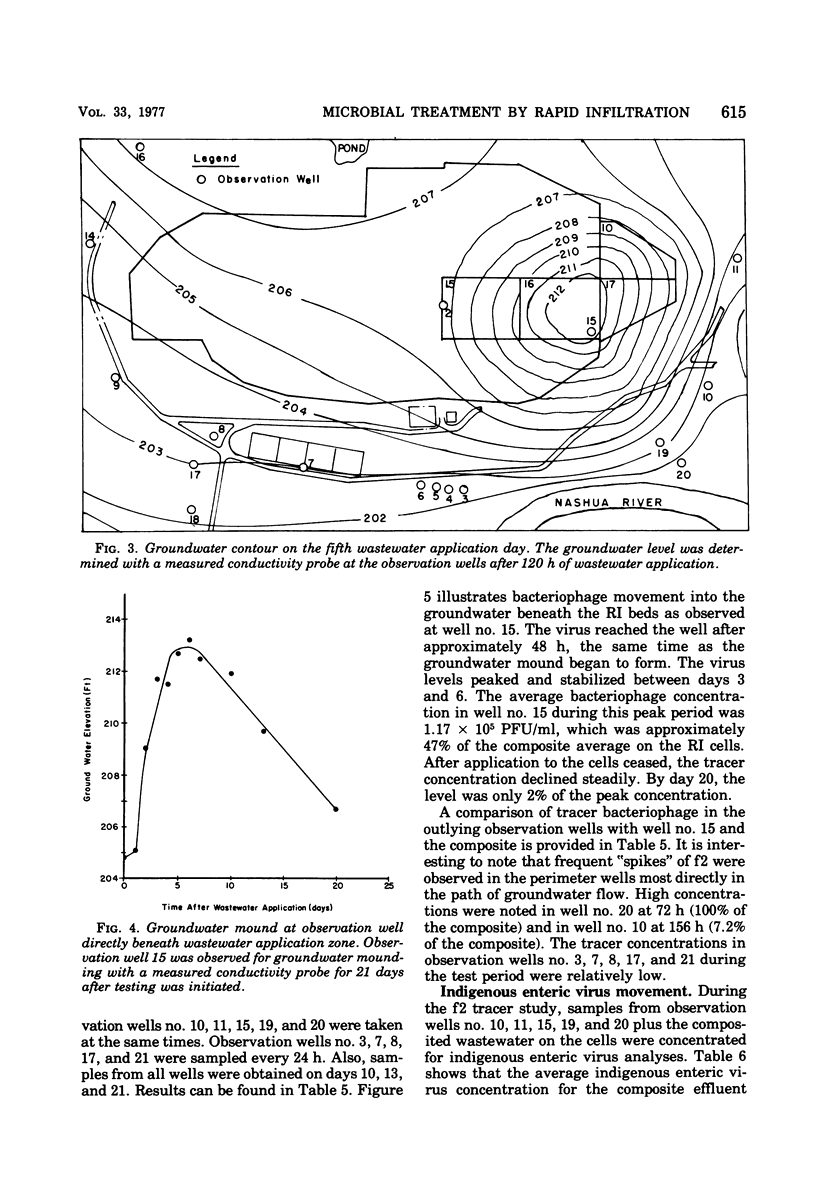
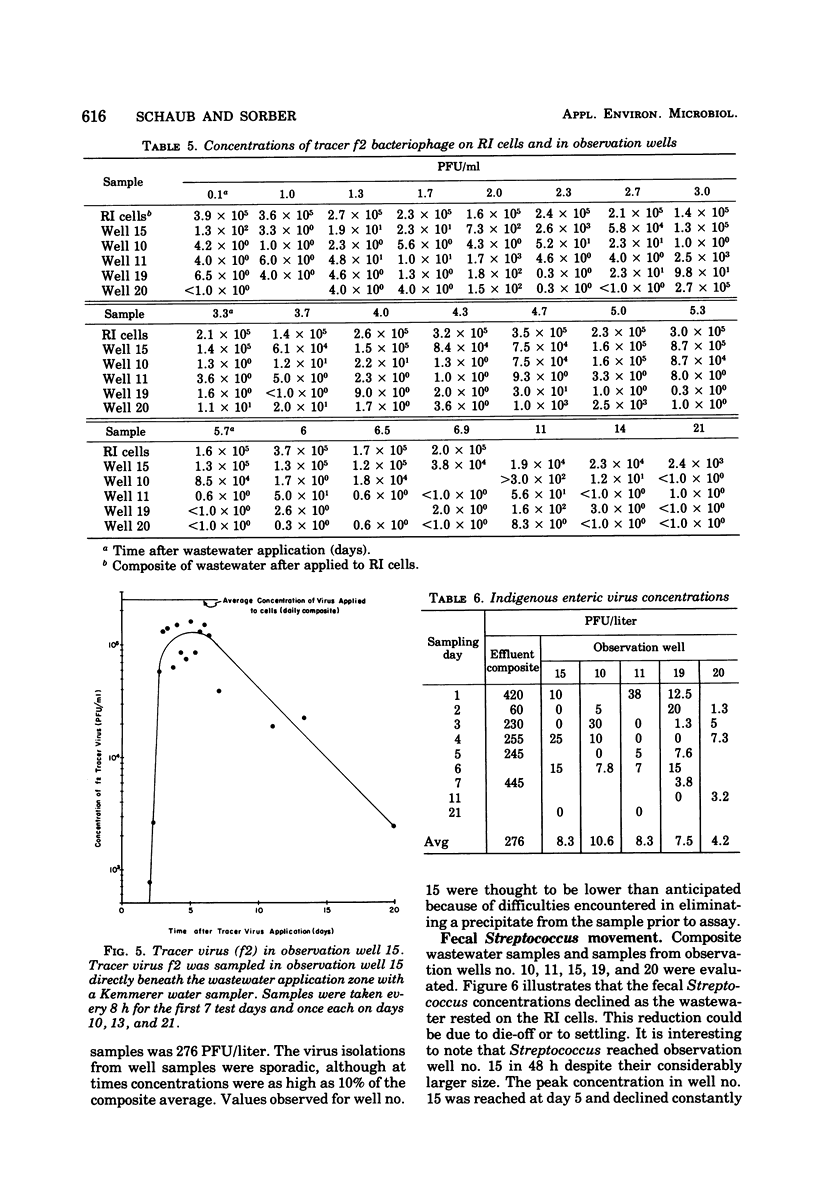
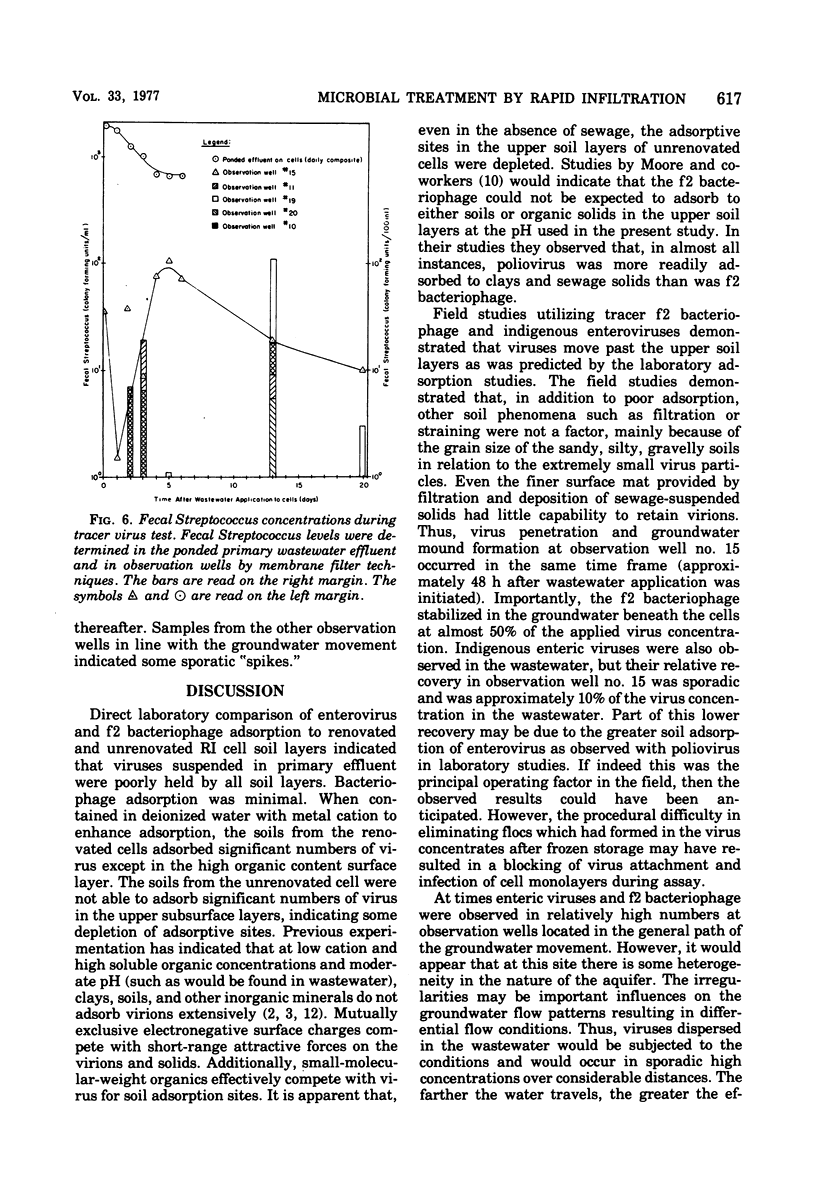
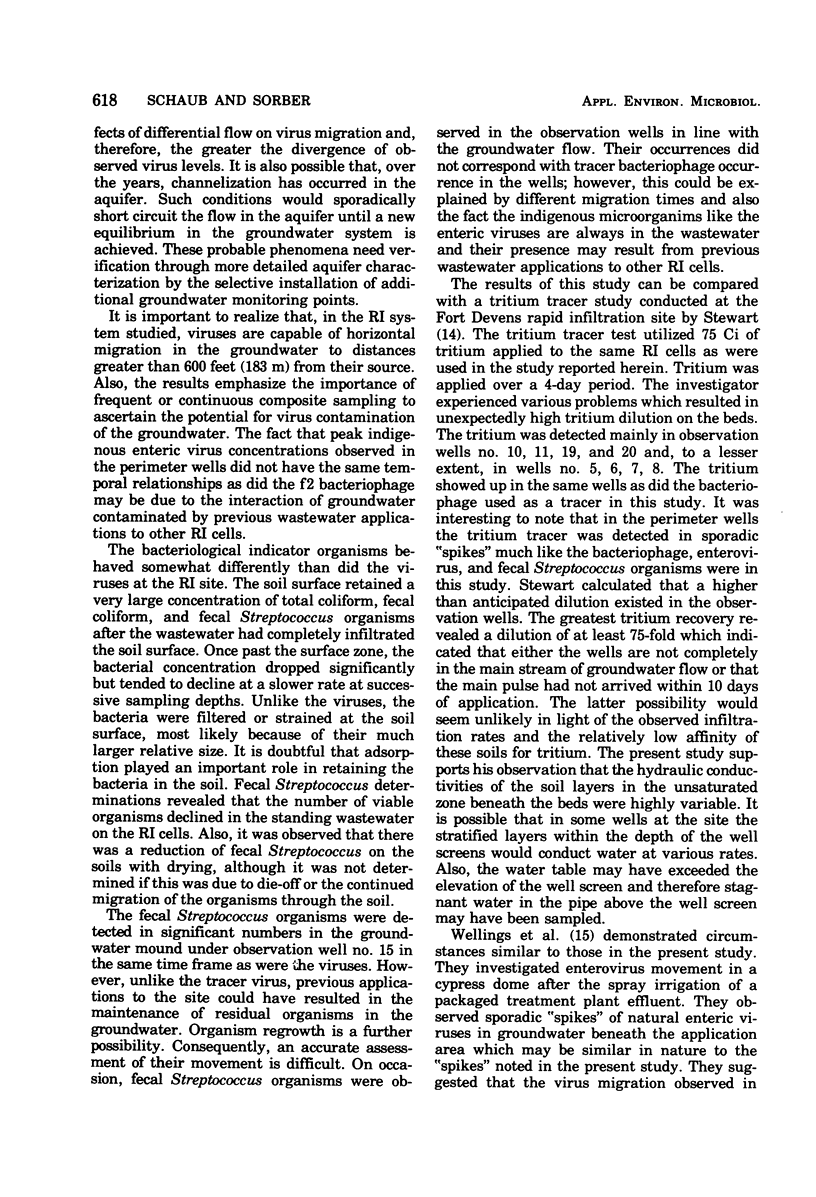
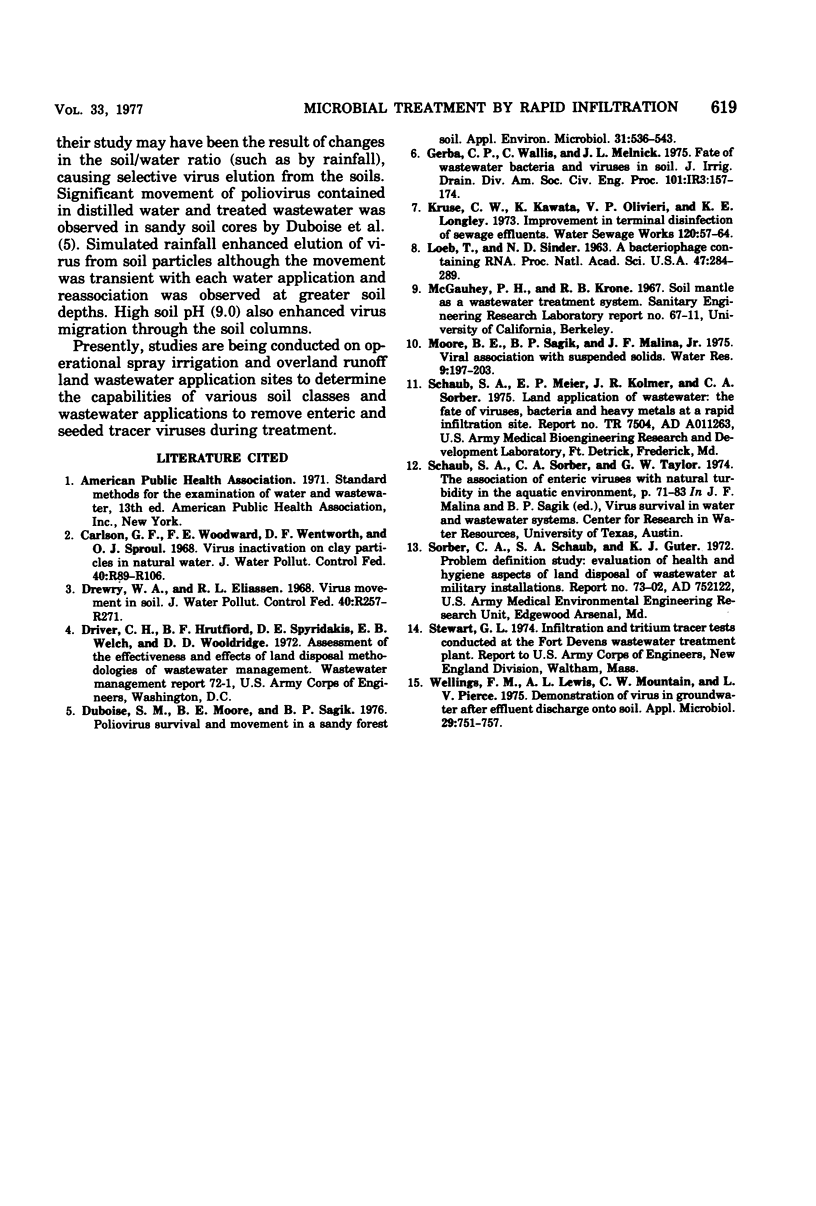
Selected References
These references are in PubMed. This may not be the complete list of references from this article.
- Duboise S. M., Moore B. E., Sagik B. P. Poliovirus survival and movement in a sandy forest soil. Appl Environ Microbiol. 1976 Apr;31(4):536–543. doi: 10.1128/aem.31.4.536-543.1976. [DOI] [PMC free article] [PubMed] [Google Scholar]
- LOEB T., ZINDER N. D. A bacteriophage containing RNA. Proc Natl Acad Sci U S A. 1961 Mar 15;47:282–289. doi: 10.1073/pnas.47.3.282. [DOI] [PMC free article] [PubMed] [Google Scholar]
- Wellings F. M., Lewis A. L., Mountain C. W., Pierce L. V. Demonstration of virus in groundwater after effluent discharge onto soil. Appl Microbiol. 1975 Jun;29(6):751–757. doi: 10.1128/am.29.6.751-757.1975. [DOI] [PMC free article] [PubMed] [Google Scholar]


